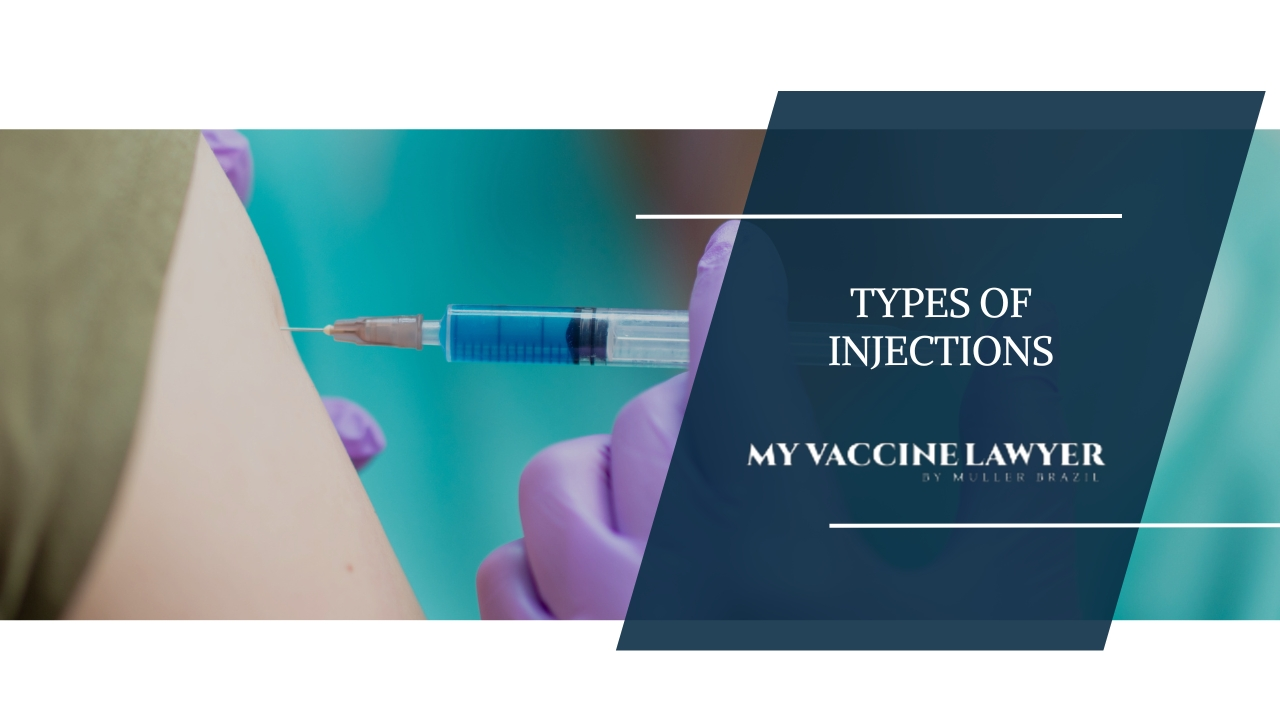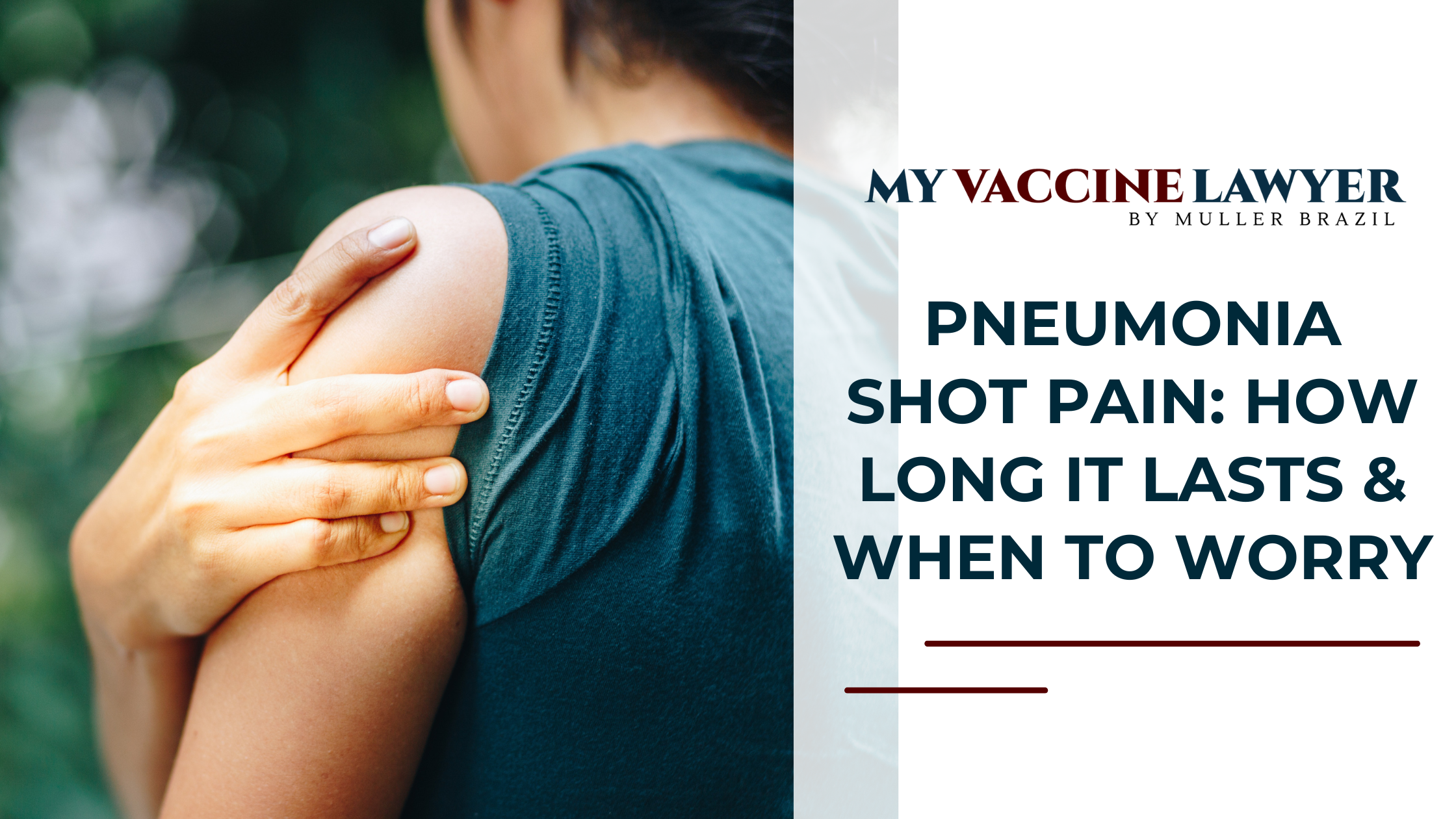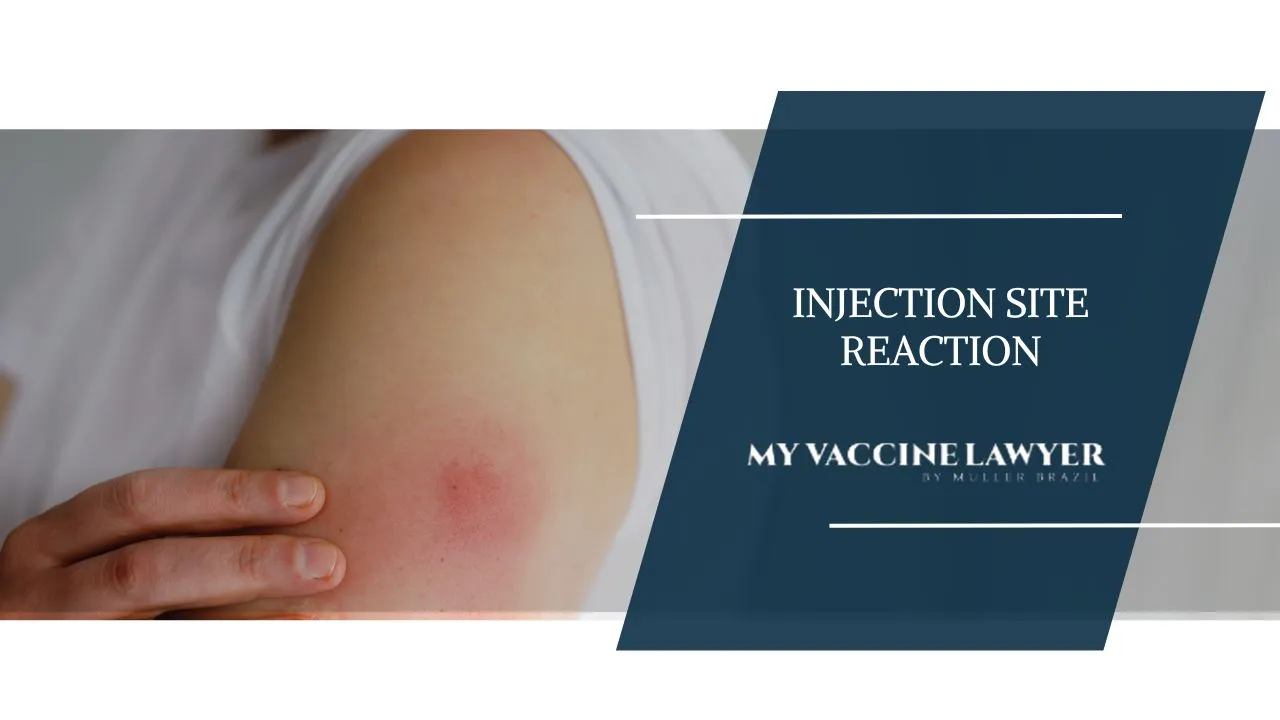Duration of Tetanus Shot Side Effects in Adults
If you want to know how long tetanus shot side effects last in adults here is some information for you. The side effects usually last 1 to 2 days and...
7 min read
Vaccine Injury Law Resources / Vaccines / Managing Vaccine Injection Site Reactions: Symptoms & Treatment
 Paul Brazil
:
Oct 30, 2023 1:06:54 PM
Paul Brazil
:
Oct 30, 2023 1:06:54 PM
In this blog post, we will dive into the various types of vaccine injection site reactions, their symptoms, treatment and how to prevent and manage them.
Vaccines are an important component of public health, but sometimes, they may cause side effects at the injection site. Understanding vaccine injection site reactions, their symptoms, and how to manage them helps ease your mind and ensure a smooth vaccination experience.
Vaccine injection site reactions refer to the body’s response to an immunization or other injection at the administration or injection site itself. These reactions can manifest as:
While some such injection site reactions may be mild and short-lived, others are more severe and require medical attention. Your safety and well-being are important, hence the necessity to recognize symptoms of a vaccine injection site reaction and understand when to seek medical help.
We shall explore the common and less common symptoms of vaccine injection site reactions and explore potential causes. We will also discuss the types of vaccine injection site reactions, including mild local reactions and severe reactions, and their respective symptoms.
Common symptoms of injection site reactions include swelling, redness, and pain at the injection site, usually appearing within 48 hours of vaccination and lasting 1-2 days. These symptoms result from the body’s immune response to the vaccine, causing inflammation and soreness in the injection site muscle where the injection was administered. However, these mild local and site reactions are generally harmless and resolve independently without any intervention.
Bear in mind these common symptoms are a standard immune system’s response to the vaccine. Symptoms indicate that your immune system is reacting to the vaccine and building up immunity against the targeted disease. So, while these symptoms may cause temporary discomfort, they are a sign that the vaccine is working as intended.
Less frequent symptoms associated with injection site reactions may include fever, intense pain, injection site blistering, and firmness under the skin, which could signify a more serious reaction requiring medical attention.
Fever following a vaccine injection may be attributed to the immune system’s response to the vaccine or coincide with underlying infectious diseases. Injections can also cause firmness under the skin due to lipohypertrophy, allergic reactions, and infections.
Should you or your child exhibit any of these less common symptoms, close monitoring is pivotal, and consultation with a healthcare provider is necessary if your child develops symptoms that persist or worsen. Early intervention helps prevent complications and ensures proper treatment for any underlying issues.
Comprehending the different types of vaccine injection site reactions equips you with the knowledge of what to anticipate and how to manage any reactions. Injection site reactions are classified into local, systemic, and allergic reactions. We will look at the differences between mild local and severe reactions while also examining their respective symptoms and treatment options.
Mild local reactions that occur at injection sites for vaccines are usually characterized by:
These reactions are generally mild in nature and resolve without any intervention.
Discomfort from mild local reactions is managed by applying a cold compress to the shoulder area around the injection site and using over-the-counter pain relievers such as acetaminophen or ibuprofen as necessary. Always consult your healthcare provider before commencing any medication, particularly if you have underlying health conditions or concerns.
Severe reactions at vaccine injection sites may be characterized by severe pain, extensive swelling, persistent redness, or the emergence of a rash or bleeding. These reactions are less common than mild local reactions but may require immediate medical attention.
Severe reactions to vaccines are also caused by allergic reactions, such as anaphylaxis, a reaction which can manifest as hives symptoms, difficulty breathing, throat, tongue, or lips swelling, severe itching, dizziness and skin rash. If you experience any of these symptoms, it is crucial to seek medical help immediately.
Should a severe vaccine reaction occur, it’s imperative to administer epinephrine and contact emergency medical services or visit the closest hospital. Your healthcare provider can provide personalized advice and treatment options for managing severe vaccine reactions.
Post-injection inflammation may present with directed severe pain, itching pain, redness, warmth, and induration, requiring treatment options such as oral analgesia, cold compresses, and avoiding immobilization of the affected limb.
We will explore treatment options for post-injection inflammation symptoms, which include methods to reduce pain and swelling and treatments for infections that may stem from injection site reactions.
Post-injection inflammation can be managed at home with symptomatic relief. Here are some steps you can take:
Following the recommended dosage and frequency specified by the manufacturer is vital when taking over-the-counter pain relievers. Consult your healthcare provider before taking any medication, especially if you have any underlying health conditions or concerns.
Reducing pain and swelling after vaccination is achieved through over-the-counter pain relievers, such as acetaminophen (Tylenol) or nonsteroidal anti-inflammatory drugs (NSAIDs) like ibuprofen.
These medications effectively reduce pain and inflammation at the injection site. Nevertheless, it’s paramount to consult your healthcare provider before commencing any medication, particularly if you have underlying health conditions or concerns.
Applying a cold compress or ice pack to the injection site for no more than 20 minutes at a time also helps reduce swelling and alleviates discomfort. Monitoring your symptoms and seeking medical advice is crucial if the pain or swelling intensifies or shows no improvement within a few days of injection.
Infections related to vaccine injection sites are exceedingly rare. But, if an infection is suspected due to symptoms such as:
Consulting a healthcare provider for an accurate diagnosis and suitable treatment is important.
Antibiotics are generally not recommended to treat infection at vaccine injection sites, or infection as they are typically mild and self-limiting. However, in cases where an infection is confirmed, the usual duration of antibiotic treatment for injection site infections varies from 5 to 14 days, depending on the severity of the infection.
Patient safety is always important, and understanding vaccine reactions and prevention strategies is imperative. We will discuss:
Common vaccine reactions include swelling, redness, pain at the injection site, fever, and other mild symptoms. These reactions are generally harmless and resolve on their own without any intervention. However, monitoring your symptoms and seeking medical advice if they worsen or do not improve within a few days is important.
In clinical studies, the most common vaccine reactions reported include:
By understanding the possible reactions to vaccines, you can be better prepared and know when to seek medical help.
Preventing vaccine reactions is achieved through proper injection techniques, such as ensuring the vaccine is administered in the appropriate area and at the appropriate depth. Central venous access devices also help lower the probability of local reactions by guaranteeing that the vaccine is administered correctly.
Additionally, consulting with a healthcare professional for personalized advice and staying informed about vaccination recommendations helps prevent vaccine reactions. Taking these precautions minimizes the risk of adverse reactions and ensures a smoother vaccination experience.
For patient safety and to prevent complications, it’s critical to recognize and respond to serious vaccine reactions. We will discuss the warning signs of serious reactions and outline the appropriate emergency response procedures to follow in the event of a severe allergic reaction being experienced by you or your child.
Warning signs of serious vaccine reactions may include:
Anaphylaxis is a potentially life-threatening allergic reaction that usually occurs within minutes to hours after vaccine administration.
If you or your child develops any warning signs, monitoring the situation closely and seeking immediate medical attention if symptoms worsen or persist is important. Early intervention helps prevent complications and improves the likelihood of treating underlying issues properly.
Should a serious vaccine reaction occur, it’s essential to administer epinephrine and contact your healthcare provider for emergency medical services or visit the closest hospital. Your healthcare provider will provide personalized advice and treatment options for managing severe vaccine reactions.
By recognizing the warning signs of serious reactions and knowing the appropriate emergency response procedures, you help ensure the safety of yourself and your loved ones during the vaccination process.
Summary
Vaccine injection site reactions are common, but understanding their symptoms, types, and treatment options helps ensure a smoother vaccination experience. You protect yourself and your loved ones by recognizing the warning signs of serious reactions and knowing how to respond in an emergency. Stay informed, consult with healthcare professionals, and take appropriate precautions to minimize the risk of adverse vaccine and site reactions now.
If you experience severe pain, fever, or blistering at the injection site that doesn't resolve after 1-2 days, it is important to contact your healthcare provider immediately.
To treat injection site reactions, you should use a cold compress or compresses to reduce swelling and itching and OTC pain medication for pain relief. Additionally, immobilizing the affected limb should be avoided to enhance lymphatic drainage. Antibiotics or antihistamines are generally not required.
The skin around the injection site will be red, swollen, and painful, potentially accompanied by fever. It may turn from red-purple to blue-gray over a few days, eventually leading to skin breakdown in 3-5 days.
It is not uncommon to have some swelling and bruising after an injection, but if a lump develops that is soft, mushy, and painful, this could indicate a developing abscess. Medical attention should be sought if any of these symptoms persist.
Injection site reactions commonly cause swelling, redness, and pain at the injection site, appearing within 48 hours after vaccination and typically lasting 1-2 days.
Paul Brazil is a native of Dunmore, Pennsylvania and a graduate of Dunmore High School. For his undergraduate education, he attended Bloomsburg University where he majored in political science. He then went on to earn his JD from Widener University School of Law. Following graduation from law school, Mr. Brazil worked at a large Philadelphia civil defense firm where he litigated workers’ compensation claims and Heart and Lung Act cases. In 2012, he joined with his coworker Max Muller to form Muller Brazil.

If you want to know how long tetanus shot side effects last in adults here is some information for you. The side effects usually last 1 to 2 days and...

The proper administration of injections is critical in the healthcare field, and it’s beneficial to be aware of all their different types with...

Getting a vaccine is a routine part of staying healthy, but that doesn’t mean it’s always comfortable. If you've recently received a pneumonia shot,...
